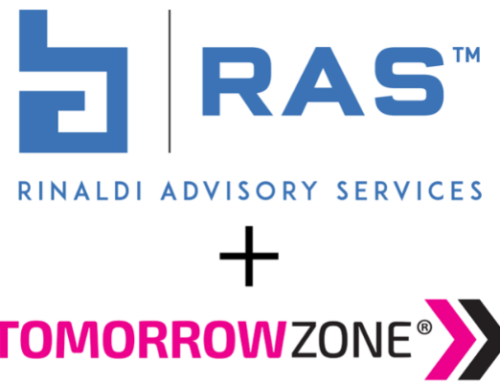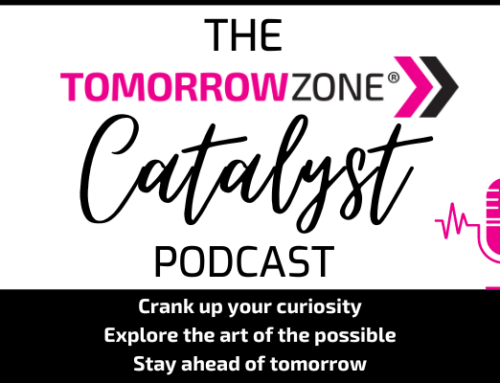In flight thinking time is awesome. Recently, I was reading a book on a flight, and ran across a passage that got me thinking, “You can’t see the hump on your own back.”
Which, of course, reminded me of Igor (pronounced “EYE-gore”) from the comedy film, “Young Frankenstein.” When asked about the hump on his back, he asks, “Hump? What hump?”
Imagining that scene reminded me of a time when I couldn’t see my own issue. I totally had power to do something about it, but needed the perspective of others to bring it to light. It was during a planning meeting for last year’s ELFA Operations and Technology Conference that I learned a great lesson, “You can’t easily see the lettuce in your own teeth.”
The Lettuce Incident
If you have ever looked at yourself and started laughing until breathless, then you will understand what this was like for me.
It was my first time leading the Operations and Technology Conference Planning committee meeting as Chair. The planning meeting was moving along wonderfully, we were having fun, very productive, ideas flying all over the place. We took a break for lunch.
My lunch selection was a delicious salad. Lots of fresh mixed greens. So healthy. We finish eating, and I resume leading the meeting. This is going so well, so fun, I’m smiling, talking, smiling facilitating, smiling. It felt like this…
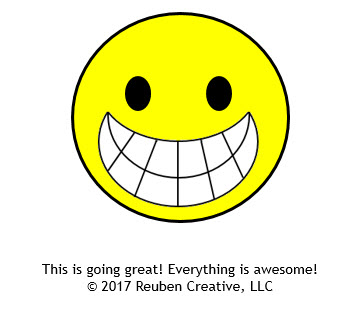
Suddenly I notice one of the committee members across the table. She is gesturing, pointing to her mouth, and looking at me with the “YOU NEED TO DO SOMETHING ABOUT THAT RIGHT NOW” look. We have collaborated on many projects over the years and I was familiar with that look. Whatever I had done, it was likely incredibly STUPID. I didn’t understand the sign language. I’m all about clarity.
So, I stop and ask, “OK, what did I do? I don’t understand your signal. Just tell me, I’m sure it is very stupid.” She started laughing so hard, “I was trying to be discrete… you have LETTUCE stuck on your teeth!”
I tried to remove it with my tongue. Smile again – is it gone yet? “No,” now she is laughing harder. Repeated the removal process. Smile again – is it gone yet? “No!” More laughing. Repeat a few more times. Others start to pay attention and soon most of the people that could see me are laughing.
I try again. Is it gone yet? “NO!” Now they are laughing even harder.
You see, I was trying to solve what I thought was the problem. “Oh tiny green chunk of lettuce is stuck on my tooth.” Without a visual, without different perspective on it, this problem was not going to be clarified or fixed.
The immediate past chair was sitting next to me, laughing his head off, he flips his phone camera to selfie mode and he hands it over to me. “Look at yourself!” Aha! A fresh perspective. New point of view, I can now better understand this problem. You see, in my mind, I thought I looked something like this…
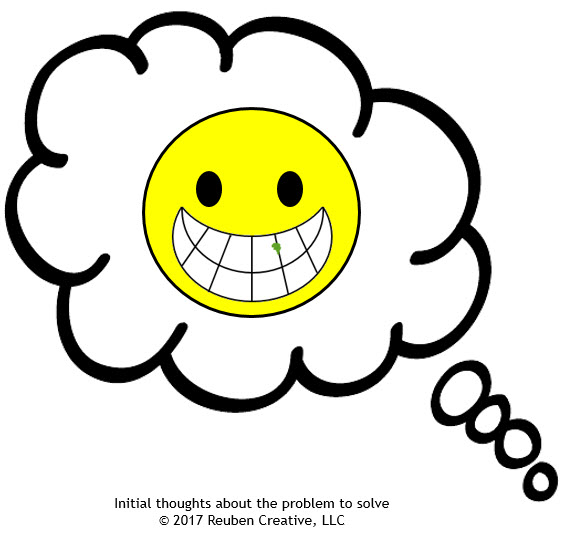
When I looked at my face in selfie mode, I started laughing so hard I could barely breathe. This wasn’t just a tiny little green bit of lettuce. Oh NO, this was a big hunk of purple almost black monster lettuce, which pretty much made it look like the left upper quadrant of my smile was missing! What I saw was more like this…
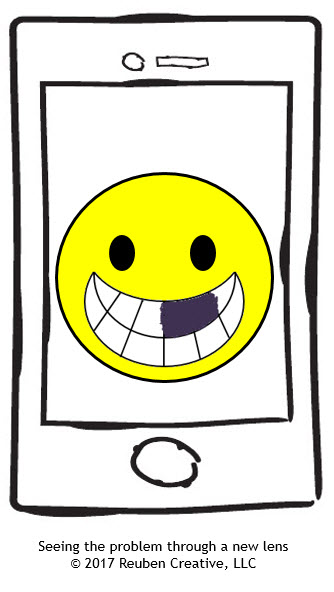
I try again to get it off my teeth. Nothing is working. One of the committee members across the table, digs in her bag and launches a pack of dental floss in my general direction. Now the room is OUT OF CONTROL. The only thing I could do is call a time out … and go use new tactics to “de-lettuce” my teeth. SO, EMBARRASSING!
Once my teeth were “de-lettuced,” I regained composure (mostly) and we ended up finishing our conference planning, it all worked out in the end. A bonus, everyone had a great abdominal workout from laughter.
It all happened so fast, but I have reflected on that incident many times since. Even though it was outrageous and ridiculous, I learned from it.
What can the lettuce incident teach us about problem solving?
I see a parallel in the work that I do with clients to help sort out business process and technology challenges. Sometimes it is like the lettuce incident. When you are so close to the problem, you can assume you understand it, and based on your assumptions, you narrow in and try to solve it without stepping back and looking at the big picture. Often you need multiple perspectives to clearly see the problem to be solved. Once you see it clearly, you can more easily find a solution.
In the lettuce incident, it wasn’t a high stakes business process, it all happened in a matter of minutes. Even so, the problem solving pattern is like what I see in lending and leasing companies who are trying to decrease processing speed, improve customer experience, and position themselves for growth. They know something is wrong with their processes, many of the processes are manual, so they try to apply technology to fix the problem. Unfortunately, without stepping back to examine the problem in the context of the big picture, without a variety of perspectives on the problem to solve, we often see implementation of technology on top of a narrowly defined problem. Resulting in great technology implemented on top of ineffective processes. Then, we wonder why the technology investments are not yielding desired outcomes. Why are things taking so long? Why so much drama on these projects?
In my case, I had certain assumptions about the problem to solve, because it has happened before. I have successfully solved it before. So, naturally, I did what I knew to do. Unfortunately, I was missing some key data points, I was missing alternate perspectives. I was caught in a potentially infinite loop of doing the same old thing because it had worked before.
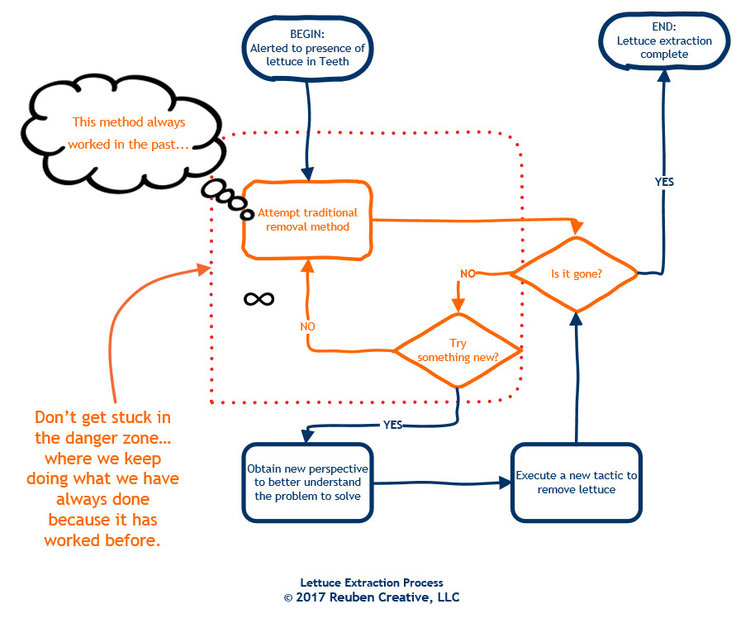
In the case of lettuce blacking out my teeth, the repeated attempts to solve the problem with narrow thinking only added to the comical nature of the situation. In the case of cross-functional teams, complex processes, numerous systems, and more, getting stuck in that loop is not funny at all.
Multi-faceted Problems Require Multiple Perspectives
In a recent strategic process workshop, my client’s goal was to reduce the time for a crucial business process to enable growth goals. This process was cross-functional and highly complex. To support 2020 growth goals, we had to find a scalable and repeatable way to significantly reduce the duration of the process by 75%! The client had looked at the process before. They tried some things, but were not getting the results they desired.
In a two-day workshop, we assembled key representatives from every function that was involved in any way with this process and examined from a variety of perspectives so that we could look at the problem from every possible angle. We looked at it from the inside-out, we looked at it from the outside-in. Customer impacts, Regulator impacts, Partner impacts, and more.
In this case, the lettuce in the teeth, so to speak, was that cross-functionally the definition of “success” for this process was different for each functional expertise. This impacted the hand offs from function to function. Each professional function involved was highly specialized. The team members in each function were great at what they did in their individual functional roles, but they all spoke about the problem with slightly different language and before this workshop, didn’t have insight into how their role fit into the big picture or how it impacted other functions. They were communicating but they were not connecting. It wasn’t until we looked at the problem through a variety of lenses that we could clearly see and agree on a common definition of what success looks like. Then for each key milestone in the process, once we had this definition, we could begin solving the problem.
Like the lettuce incident, the early attempts to fix the problem weren’t working. Each functional representative was only seeing part of the picture. Once we pulled it all together so that they could see the big picture and more clearly define the problem, the solution generating momentum skyrocketed! The team walked out of the two-day session with an actionable roadmap for the next year enabling them to work toward achieving their goal of reducing duration of this process.
In the lettuce incident, I was trying to solve the problem without a full picture of the real issue. I was imagining that I understood the problem. I assumed that I understood the problem. Based on historical successes in dealing with similar challenges, I thought I was doing the right thing. It wasn’t until I examined the issue from a different perspective (outside-in) and re-considered basic assumptions, that I was able to see what they could see and thus understand the problem (and its magnitude) clearly enough to solve it.
Lessons Learned from Lettuce
- Outside Perspective Matters: Sometimes you need the perspective of others. It’s hard to see the lettuce in your own teeth (having friends AND properly applied technology can help). When facing a wicked tricky problem like cross-functional process optimizations, it’s good to get those alternate perspectives as early as possible. In a world changing as fast as ours is, it is important to be willing to look at problems from many angles and question even the most basic assumptions.
- Make it safe to share varying perspectives. You don’t have to be serious all the time. Laughing together is awesome. It’s good to have teammates that will tell you when you have lettuce blacking out your teeth. Laughing at yourself is a good thing. It can be therapeutic. (It can also be a great ab work out). It’s OK to have fun and still get awesome stuff done. Fun is great, even more important, creating an environment where it is safe for cross-functional team members to share different perspectives on an issue is vital for effectively clarifying and solving problems. Bringing in an outside facilitator can help you to create this type of environment.
- Visuals are vital. Whenever you are trying to solve a complex problem, try to get visual as fast as possible. Whether whiteboard, sticky notes, process maps, screen sharing, or in my case, selfie mode on the phone – do what you can to see the big picture. Once you have shared understanding of what the problem looks like and the context in which it occurs, it is so much easier to work toward solutions.
One of my favorite John Maxwell quotes,
“Experience is not the best teacher, evaluated experience is the best teacher”
In reflecting on this experience, I am reminded of what a joy it has been to collaborate with the amazingly brilliant ELFA Operations & Technology committee. While they were laughing AT me in this case, I know they were also laughing WITH me. Some of us have recalled this story together and laughed all over again. (Personally, when I think of it, I laugh all by myself). Building a team culture where it is safe to call out lettuce in the teeth, bring fresh new perspectives, laugh and learn together is powerful.

